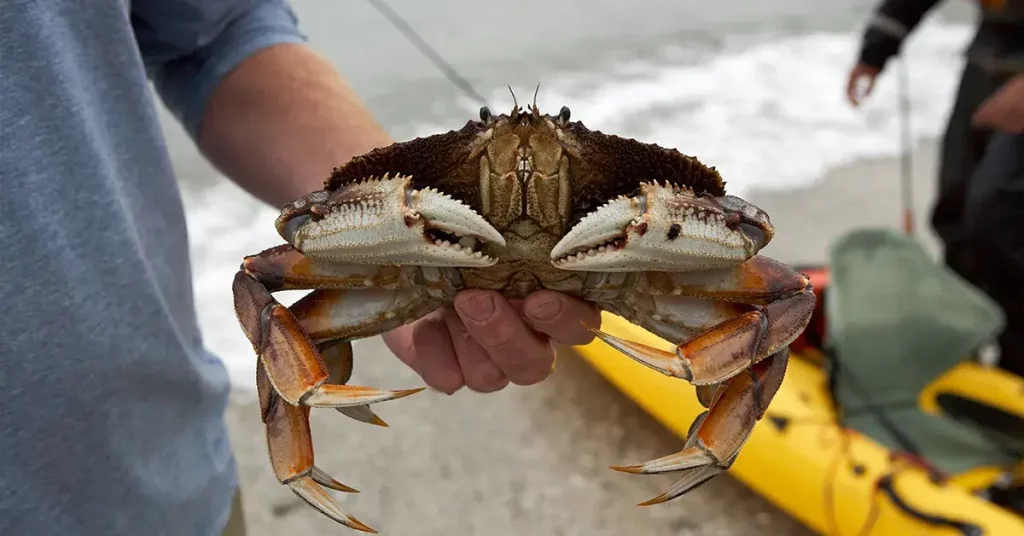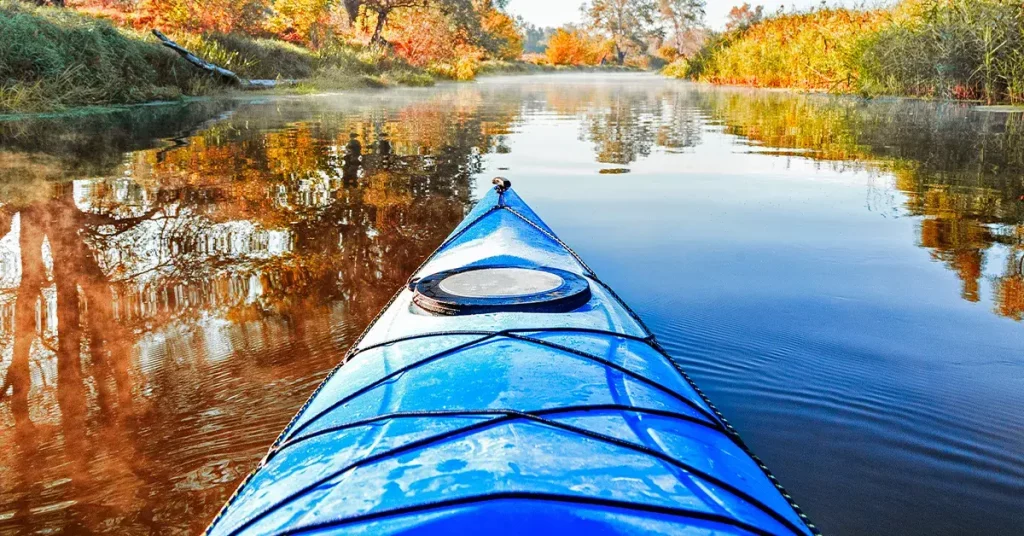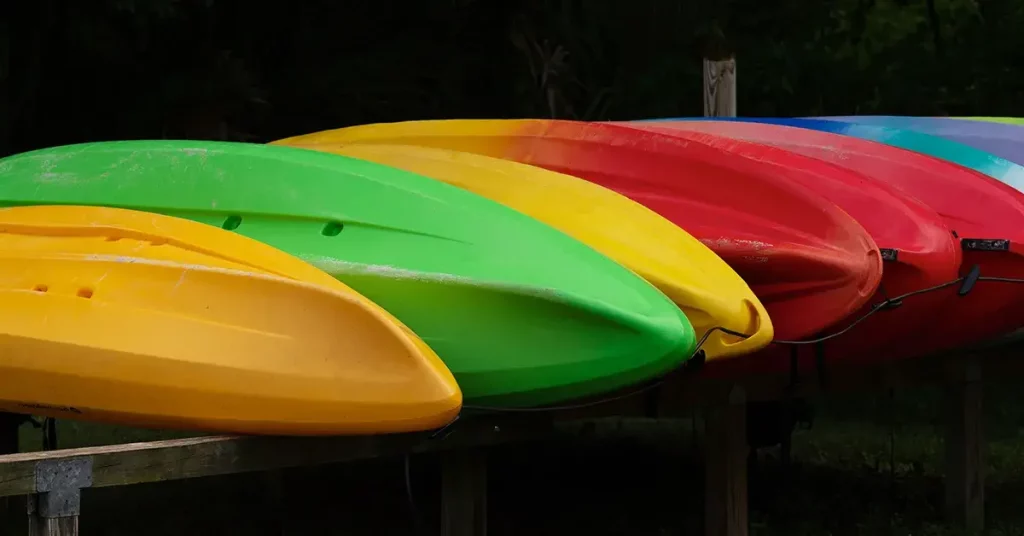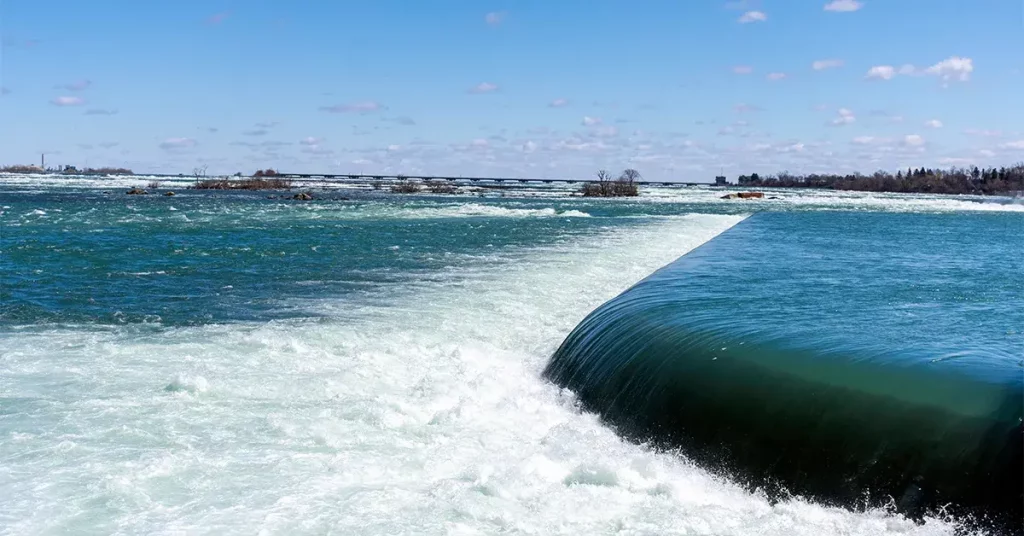If you’re a kayak angler, what better way to widen your horizons than to start crabbing? Catching crab is one of the most enjoyable ways to spend time on the water, and dropping a few pots in the water while you fish can greatly increase your haul at the end of the day!
Even if you’re a seasoned kayak fisherman, catching crab is a whole different ballgame – and you’ll need to prepare properly if you want to score a pot full of keepers.
So what do you need to start catching crab? And how do you increase your odds of success? I’ll break down the gear, techniques, and useful tips you need to catch more crab.
How to Get Started
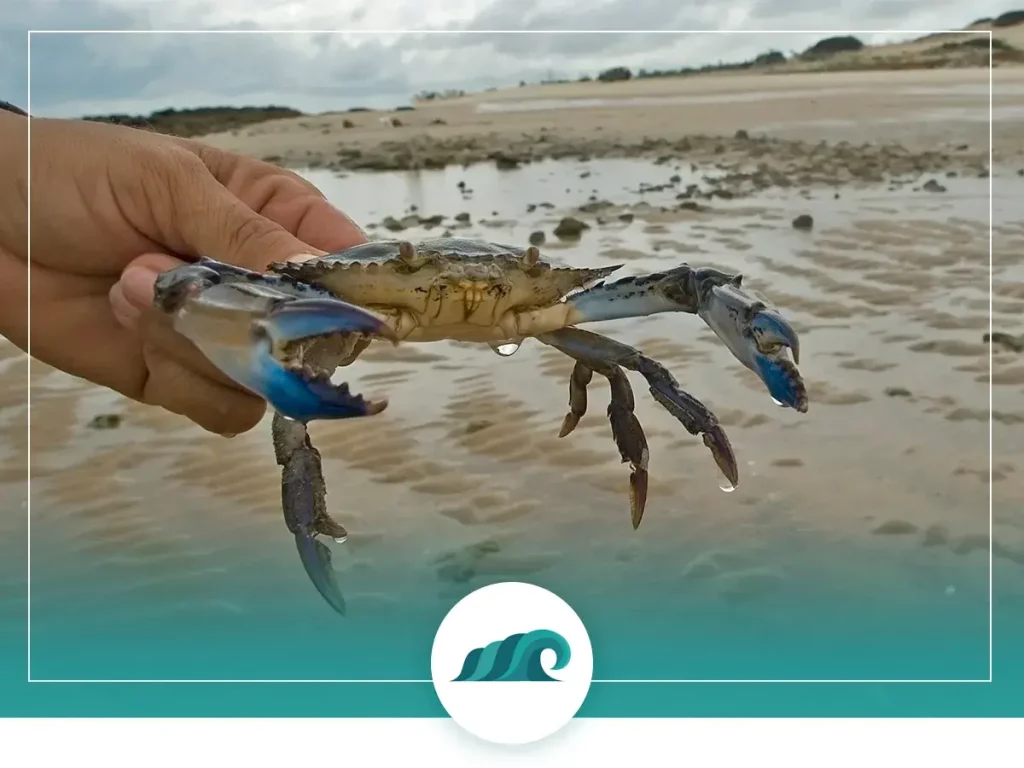
Crab species differ depending on your location, so the first thing to determine is the type of crab you’ll be catching. Dungeness crab is found all along the west coast of North America, while blue crab can be found along the east coast, ranging from Nova Scotia to as far south as Uruguay. Red Rock Crab is another popular west coast species, and like their name suggests they tend to live in rocky and reefy areas.
Your gear and technique will differ slightly depending on the species you’re targeting. Blue crabs are significantly smaller than the other two species, so you’ll need to make sure the mesh wiring on your traps isn’t too wide. Crab also tend to hang out in different spots, with Dungeness preferring flat sandy terrain, while red rock crab like rockier environments.
If you’re not already familiar with the area you plan on crabbing in, a fish finder and GPS can be very useful. Fish finders will allow you to find the right depth to set your line to, while a GPS will allow you to set waypoints where you leave your traps – so you don’t lose them in the drink.
Where to Catch Crab
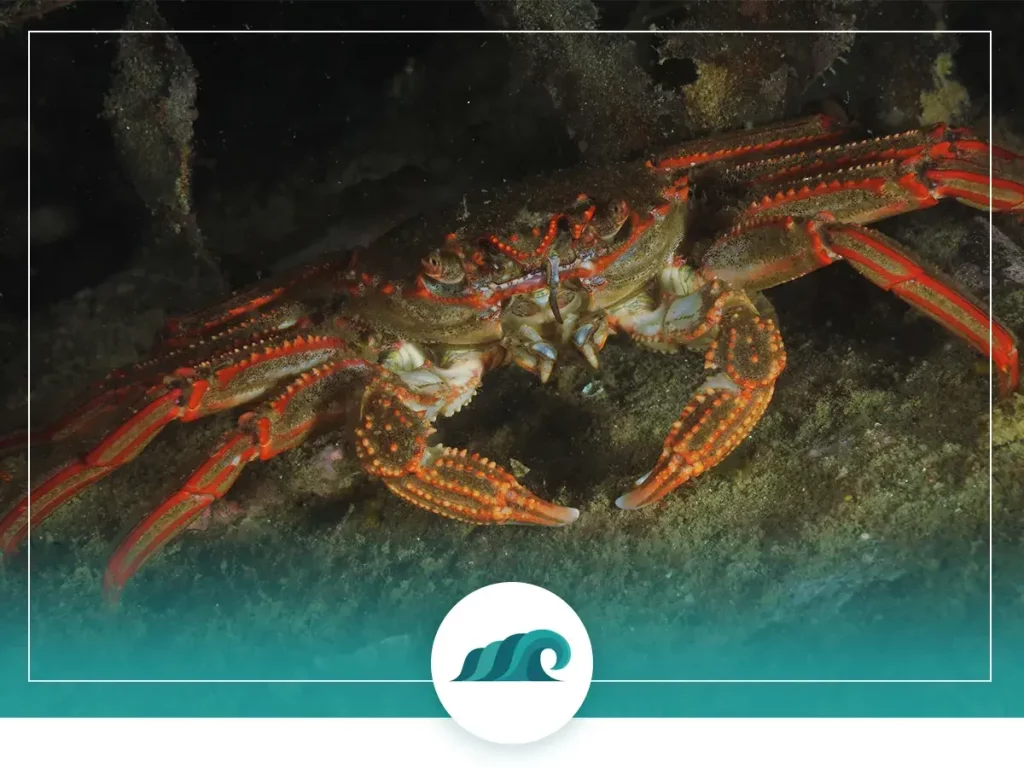
Crab can be caught in a multitude of places along the coastal areas of North America. On the west coast, Dungeness is located from Alaska down to northern California. Red rock crabs are found from Alaska down to Baja California. Some of the best kayak crabbing spots on the west coast are the Puget Sound area, Tillamook Bay in Oregon, and the Bay area in California.
On the east coast, some of the best spots for catching blue crab are the Chesapeake Bay area in Maryland, Northern Florida, and Crab Lake in Texas. In addition to blue crab, some locations along the east coast and the Gulf of Mexico are home to the small but delicious stone crab.
If you’re lucky enough to be in Alaska, you’ll have access to some of the best crabbing on the planet, and may have the opportunity to catch Tanner, Snow, and possibly King Crab. Unfortunately, you’ll need a larger boat to target these species, as they’re located in much deeper water than Dungeness.
When Can You Catch Crab?
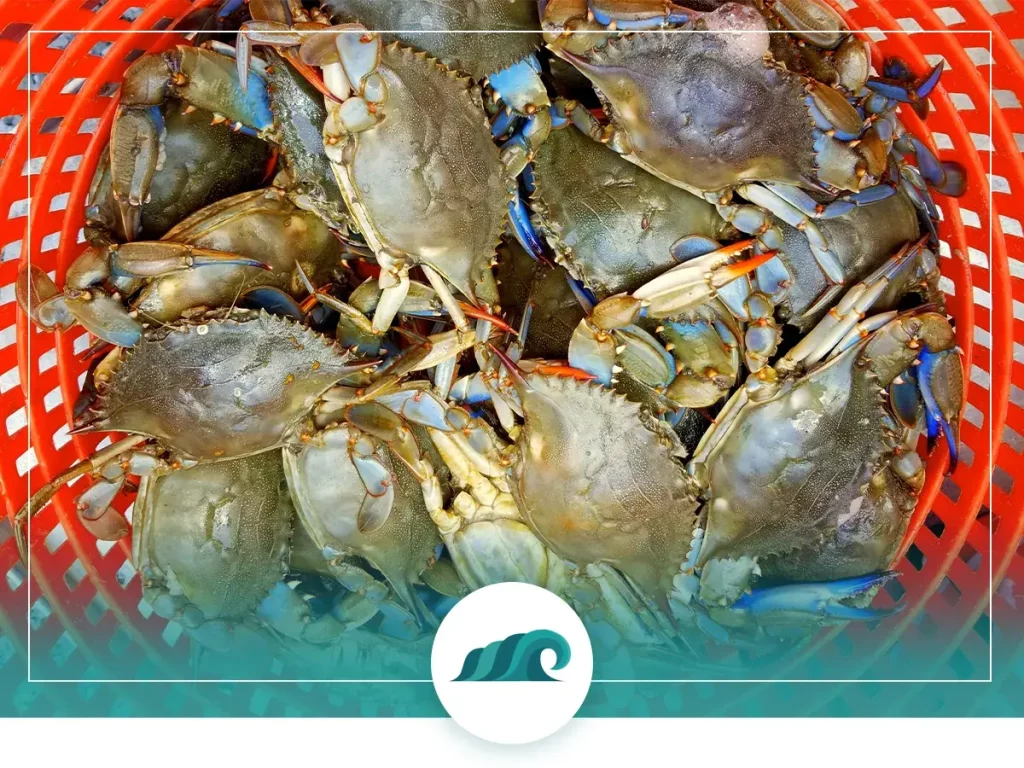
During crabbing season, the best times to catch crab is 1-2 hours before high tide to 1-2 hours after high tide. “Slack water” (or the times of peak high or low tide) is also an excellent time, as crabs are often walking around foraging for food during this time. If you’re crabbing in the open ocean, there’s no tide to worry about, so the exact time you drop your traps is less of a factor.
Crabbing regulations and seasons vary from state to state. So make sure to familiarize yourself with the local size and catch limits, as well as open season dates.
In California, Dungeness crab season runs from November through July, while in Oregon crabbing season is open year-round except for ocean crabbing which is closed from Oct.16 to Nov 30. Washington state regulations depend on the exact location, so be sure to check before heading out.
For east coast crabbing, check out the following state regulations:
Check out this detailed video for an in-depth look at kayak crabbing for Dungeness:
Kayak Crabbing Gear Needed
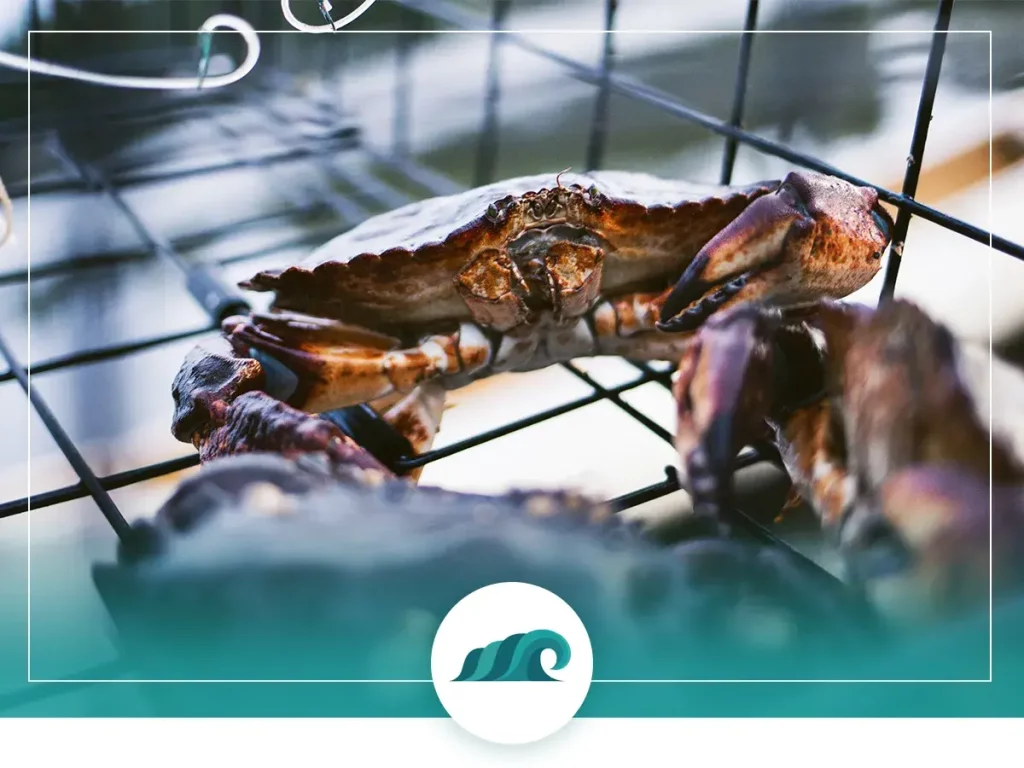
Now that you know a little bit about where and when you can catch crab, let’s take a look at the gear you’ll need to get started.
Crab Traps
Crab traps come in a wide variety of types and sizes. If you want a detailed breakdown, check out my review of the best crab traps on the market.
Transporting your traps in one of the biggest challenges of kayak crabbing. You’ll need a trap that’s compact enough to fit in the bow or stern of your kayak. Collapsible or folding steel traps work well for this, as you can fit more of them on your watercraft at one time, and they’re easier to handle from a seated position.
If you’re looking for a traditional crab trap, some of the best options are the Danielson FTC Crab Trap for Dungeness and Red Rock crab, as well as the Joy Fish Maryland Blue Crab Pot Trap for Blue Crab.
There are also ring style traps, which require a more active fishing style – and need to be checked every half hour or so. They’re basically two concentric rings with netting in between them, so the crab can walk directly into them and start feeding on your bait. These are great when you’ve already dropped off your other traps, and want to continue crabbing. Check out the KUFA rubber wrapped steel ring crab trap for an excellent ring trap.
Rope and Float
Once you’ve got your crab pots, you’ll need a way to secure them in place so you can easily retrieve them later on.
A lead-core rope is ideal for securing crab traps, as the slack will slowly sink in the water, rather than floating on the surface – creating a hazard for passing motorboat propellers. You’ll want to use approximately 10 to 20 feet more rope than the water’s depth, as the trap can get moved around by current and tides.
A float is used to secure your trap in place, as well as to give you an easy to spot indicator on the surface. Go with a foam float or buoy rather than an empty milk jar – they’re far more durable and will take up less space in your kayak. Also, brightly colored floats like red/white or neon orange are much easier to spot on the surface.
If you’re crabbing in a strong current, you may need to add some extra weight to anchor your pots in place. Lead fishing weights, rebar lashed to the frame, or even a brick can all work well.
Check out the KUFA 100′ leaded core rope & 11” float combo for a well-made crabbing rope and float combo.
Bait
The best bait for crab traps is always a hot topic of debate. Since crabs are scavengers, they can be successfully caught with a wide variety of baits, from fish carcasses to chicken parts to squid or octopus. Some crabbers even swear by cat and dog food. One advantage of chicken and poultry is that it doesn’t tend to attract predators like seals or sea lions, which can destroy your traps to get to your bait.
For kayak crabbing, use whatever bait you have handy, but ideally, you’ll want something easy to handle and won’t make a mess. Pre-frozen baits are a good choice, as they won’t make a mess, and take longer to dissolve in the water.
Gauge
A gauge is a small plastic measuring device that allows you to quickly check if a crab is legal size to keep. They typically feature measurements for several states, as well as an illustration of male and female crabs.
Gloves
A thick pair of insulated rubber gloves are great for handling crab and traps, especially for cold weather fishing environments. They’ll also protect your fingers from getting pinched.
Bait Box or Pouch
A bait box or pouch is essentially an enclosed mesh or steel container that you stuff your bait inside. This keeps the bait somewhat protected, so crab can’t steal your bait from your trap. These are useful for long soaks – as your bait will last longer than lashing it directly to the trap. Some are designed to be seal-proof, so seals and other predators can’t steal your bait.
Crab Storage
If you’re only crabbing with one trap, then you can use it to store your catch until you get back to shore.
If you’re fishing with multiple traps keeping your catch inside the traps can become a bit clunky. Once you start catching crab, you’ll need somewhere to stash them. This can present a challenge on a kayak, as you have limited real estate for this.
You can use a sturdy duffle/wet sack for this, or mount a small bucket in one of the wells. If you have a kayak crate, you can use it to stash a few crabs until your back on dry land.
Kayak Crabbing Techniques
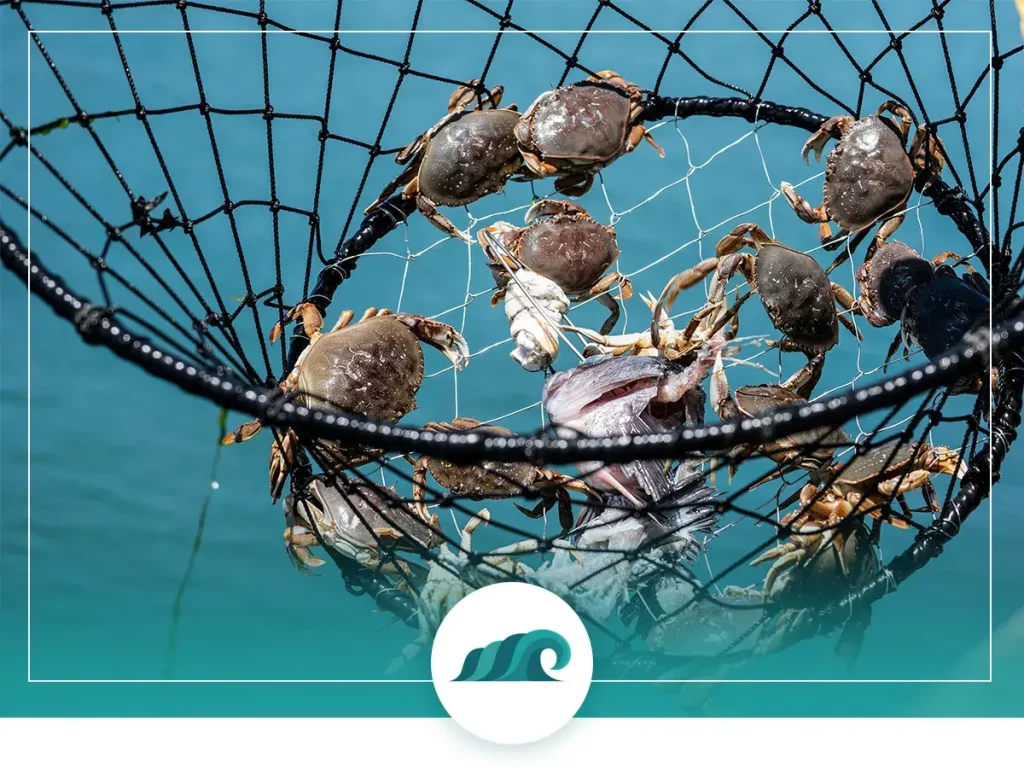
Kayak crabbing is similar to crabbing from other small watercraft, but there a few things to keep in mind to give you the best shot at a successful outing.
Dropping Off Your Traps
A fish finder/GPS is useful when you’re dropping off traps. This allows you determine the exact depth before setting up the trap. You’ll also be able to see the texture of the bottom, so you’ll have a better idea if the area is likely to yield a full pot.
When you’re dropping your trap, make sure you can feel your trap touch the bottom before releasing the rope. That way there’s no chance of losing it below the surface if your line isn’t long enough. Lower it slowly so you’re sure the trap lands face-up on the bottom.
If you’re dropping multiple traps, it’s a good idea to leave at least 50 feet in between each one.
Checking Traps
How often should you check your traps? For traditional crab traps, you’ll generally want to let them soak for at least 2 hours before checking on them. It can take a while for crab to locate your trap and find their way inside.
In bays and estuaries, you’ll want to the trap sit through a whole tidal cycle if possible – as crab will move along the seafloor with the tide. If you’re in open ocean, this is less important, and you can check them more often.
To empty a trap, grab the line and slowly and steadily pull it up towards you. Leave any slack line in the water behind you. When you’ve got the trap on the surface, try to grab the crabs by their rear legs – that way they won’t be able to pinch you!
Other Kayak Crabbing Methods
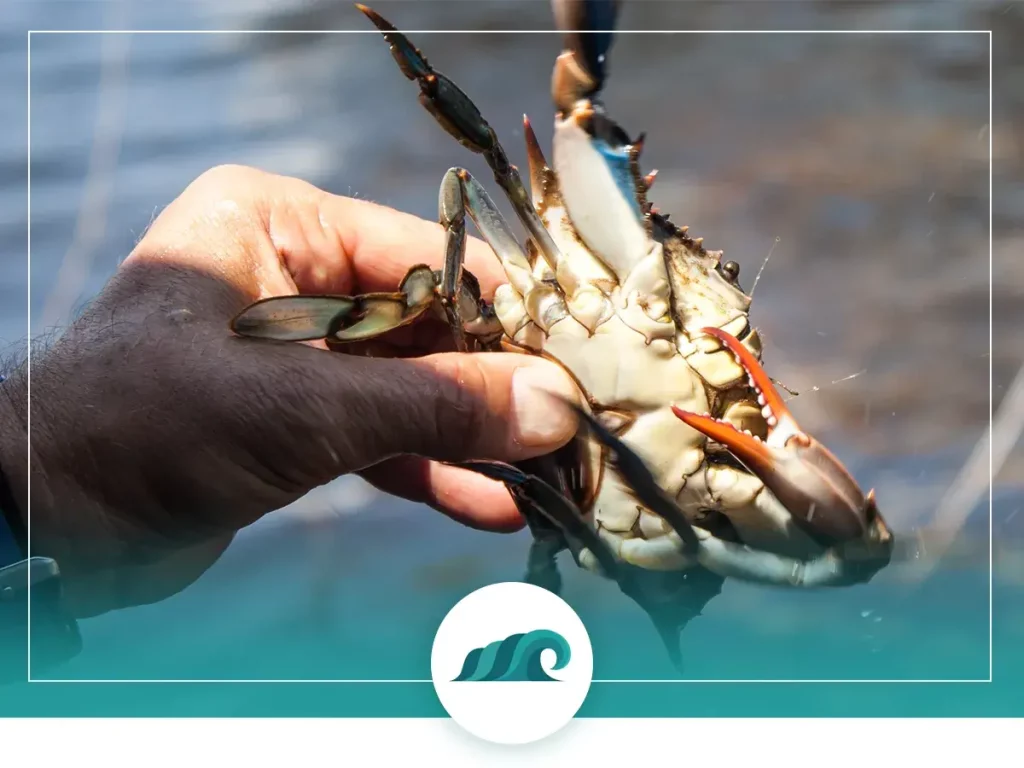
Besides traditional crab pots, there are several other ways of catching crab from a kayak.
Casting traps and snares are smaller traps that are designed to cast with a normal rod and reel. They utilize different designs, with ‘jaw’ traps using spring-loaded jaws that open flat on the bottom and close shut as you retrieve.
Snares are essentially small bait boxes with several self-tightening nylon cable loops surrounding them. When you feel a crab feeding on your bait, you start reeling in the snare, which traps the crab’s legs inside the cables. Check out the Air Fly Custom Made Crab Snare for a well-made and effective snare.
When fishing with most traps and snares, you’ll want to go with at least 40-pound test line. You’ll also need a reel strong enough to pull the trap (and crab) through the water.

